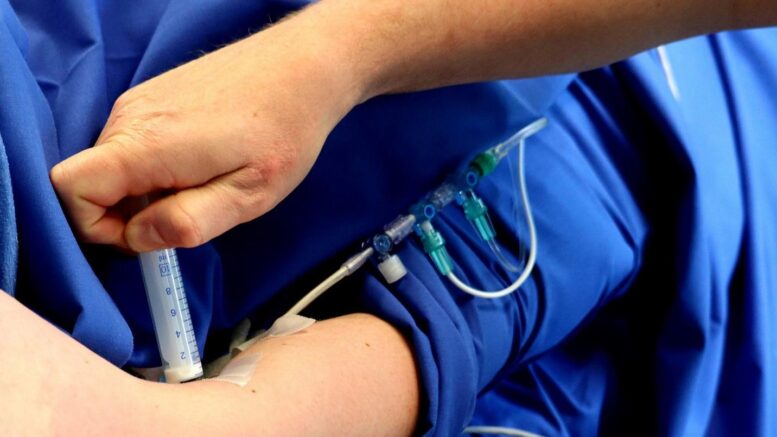Medical sensors are an essential part of the functioning of various medical devices across multiple applications. They are used within hospital wards, intensive care units, lab equipment, GP offices, and in-home care products. Usually, they assist in preventing, monitoring, diagnosing, and treating injuries and diseases. That’s not all, medical devices used for equipment calibration, cleaning, and specimen examination can also use sensors.
Recently, the application of sensors in the healthcare industry has soared. They play a pivotal role in improving patients’ recovery times while saving organizations money. Advancements in sensor technology, such as smaller-sized sensors with enhanced reliability and accuracy, have led to the manufacture of next-generation medical devices. These medical devices have led to better treatment, faster diagnosis, and better care for patients at home and in the hospital. In this guide, you will learn the role of medical sensors in developing the healthcare industry.
1. Catheter Devices Navigation
Sensors are used in the medical industry for catheter device navigation. These devices serve as the eyes of a physician in therapeutic procedures. They vary depending on the device and the objective of a medical procedure. These variations are on the force, temperature, pressure, and electromagnetic sensors. Other technologies used in navigation sensors include ultrasound, radiofrequency, and infrared, among others.
Most of the sensors are electromagnetic and advantageous in the therapeutic procedure. These sensors use external energy sources, which have coils for positioning identification. They are embedded on the catheter’s distal tip and receive electromagnetic waves through a blood vessel.
2. Improving Safety of Patients
Medical devices are continually becoming automated. As automation rises, so does the need for reliable data to ensure optimal operation. Accelerometers, used in patient monitoring equipment, pacemakers and defibrillators, and blood pressure monitors, can measure the vertical orientation of a device before an injection.
On the other hand, magnetic sensors monitor the plunge’s progress, reducing pain and adjusting the delivery speed. Capacitive sensors ensure the needle is aligned with the skin properly at the point of injection. There is no need for physical buttons when capacitive sensors are used for areas that are touch sensitive, thus preventing the accumulation of bacteria and ensuring easy device sterilization.
3. Monitoring Air Quality
Detecting minute gas variations is crucial for hospitals. Sensors avail a cost-effective and easy method to monitor the quality of air. For instance, devices can integrate sensors to detect gases such as carbon monoxide, which is odorless.
Hospitals can also take care of patients with Chronic Obstructive Pulmonary Disease (COPD) from enhanced lung irritation by scanning for any harmful particulates in patients’ rooms. The data is instant; thus, healthcare providers will take measures faster than they would have.
4. Temperature Monitoring
Temperature and time are the primary enemies of pharmaceuticals and biological products. Sensors in devices such as injectors allow the device to monitor the temperature of the drug, concentration, and expiry date. Additionally, the sensor can connect to the cloud to countercheck the injection settings vis a vis what the doctor has prescribed. Consequently, it will make a suggestion or raise an alert to the patient.

Sensors can also be embedded in packaging to monitor temperature during storage and shipping. The smart sensors will allow you to determine whether the formulas have remained at a considerable temperature during the period. Additionally, you can track the package in real-time.
Sensors will have labels that indicate temperature and humidity changes. This allows you to count on the product’s integrity. You will verify the status instantly without any room for guessing.
5. Connectivity Integration of Devices
Sensors have enabled easy connectivity function integration. The sensors can now connect to the cloud through satellite, Wi-Fi, Bluetooth, internet, or low-power wide area networks. Patients no longer have to drive to their doctors to check their vitals. Now, with the help of a smart sensor gadget, patients can take and send their vitals to doctors in the comfort of their homes.
Device and pharmaceutical companies can also track the statistics of patients in clinical trials faster, conveniently, accurately, and efficiently. The good thing is data protection by an authentication process and secure encryption.
Final Remarks
From the recent trends, home treatment will surge. Patients will receive treatments in the comfort of their homes. Medical devices will continually get more innovative, smaller, and easier to use. Smart devices that use sensors will be behind these changes in the medical industry.
Healthcare devices are continually taking advantage of technology. There is growing interest in monitoring individuals in medical risk using implantable or remote sensors. The insertion of AI devices in the human body is expected to rise, and the market is undergoing constant R&D work. Medical sensors are expected to develop intelligence, accuracy, size, capability, and reliability. There will be challenges such as compliance with regulations, decreased development time, extended lifecycle, and product safety. Above all, sensors will play a crucial role in the changes expected in the medical industry.
